A Beginner’s Guide to the Right Actuator (Consider the Valve!)
A valve, in its most basic form, consists of a body and an internal moving component (closure element), which shuts off or restricts flow through the valve.
#basics #actuators
There are many types of valves in the industrial world, which are categorized by type, industry, size, pressure class or one of many other considerations. Which actuator is needed for automation, however, really depends on four basic parameters: motion, force, speed and frequency of operation.
MOTION
Classifying valves by the first parameter, motion, means looking at some distinct differences in valve design:
Linear valves
Valves with a closure element that requires linear movement can use a fluid power linear cylinder or a diaphragm coupled to a smooth stem. Alternatively, a multi-turn actuator with an electric or fluid power motor could be used to drive a threaded stem.
Valves with a linear motion on the closure element need a rotary-to-linear conversion mechanism to allow them to be automated by multi-turn actuators. This conversion mechanism is described using one of these three categories of valve stem designation: 1) rising non-rotating stem, 2) rotating non-rising stem, or 3) rising rotating stem.
The rising rotating stem (Figure 3) is a hybrid of the previous designs. The stem nut is located in the top of the valve, so as the stem is rotated, it raises or lowers the closure element. The actuator is coupled to the valve stem with a sliding spline or “butterfly” nut arrangement. Typically the thrust of the valve is contained by the top works of the valve.
Although the closure element moves in a linear fashion, the actuator output is rotary. The movement is converted from a rotary motion to a linear motion by the stem nut.
For valves with no linear-to-rotary conversion mechanism, a linear output actuator is needed to achieve the required motion. The most common of this type are pneumatic linear actuators used to operate process control valves (Figure 4).
Part-turn valves
Most part-turn valves require a quarter turn of the valve stem to move from closed to open and vice-versa. This type of valve, having a standard movement of 90 degrees, allows use of an actuator with a known travel distance. The closure element on the quarter-turn valve could be a disc (butterfly valve), a sphere (ball valve), the frustum of a cone (tapered plug), or a variation or combination of these types (Figures 5 and 6).
FORCE
The force required to move the valve through its range of motion is critical in selecting an actuator. In the case of sliding stem valves (Figure 7), this force would be a linear push or pull. For multi-turn or part-turn valves, a rotary force or torque is required.
The torque (Figure 8) required to operate a valve usually varies with the size of the valve, the valve design and the differential pressure across the valve. Typically, it is this differential pressure in the closed position that creates the greatest force requirement of the valve, which is the force required to open the valve.
The larger the valve closure element, the larger the force on the seats. For some valves, such as gate and globe valves, this force can be calculated and a reasonable estimate of the valve force demand can be made for sizing the actuator.
Other considerations are stem packing friction, the media temperature and the mechanical characteristics of the valve and valve stem.
For quarter-turn valves, however, it is not possible to independently calculate the torque demand of the valve with accuracy. This has to be done by physical measurement of each valve size under the various differential pressure conditions.
Several types and designs of actuator are needed to cover the full range of output force required for covering the spectrum of valve sizes and pressure classes. The greater the valve torque demand, the larger the actuator and the more costly.
SPEED
The speed of operation required by a valve application defines what power is needed from the actuator.
Power is defined as work done during a specific time frame. The work done by an actuator is the force demanded by the valve multiplied by the distance over which that force has to be applied (the valve travel). If this work has to be done over one minute, for example, then the power needed would be twice as much as that needed to operate the same valve over two minutes.
For electric actuators, this is a critical parameter because it dictates the motor power. For fluid power actuators, this parameter impacts the size of the supply and exhaust lines as well as the direction control valve sizing. In both cases, cost is significantly impacted, as is the physical size of the actuator.
FREQUENCY OF MOVEMENT
The preceding valve demand criteria dictates the needed output motion, force output and power of the actuator. The required frequency of operation has a direct impact on the durability of the mechanical drive and robustness of the controller (Figure 9).
Isolating or regulating duty valves and actuators usually only need to operate infrequently. As a result, little wear on mechanical components and controls occurs.
Modulating process valves, however, may operate constantly. This requires a degree of resistance to wear on the valve and actuator assembly. For this reason, it’s important that modulating requirements are factored into the actuator selection. Not only is greater mechanical wear on the drive train possible, but also the controls must be capable of constant change without overheating or failing.
Many subjective opinions have been made on the definition of modulating and regulating duty. However, the industry has adopted milestones of 60 and 1200 starts per hour for actuator capability. Figure 9 attaches some general nomenclature to those start frequencies.
This column is only a brief description of the key parameters of a valve that must be considered when choosing an actuator. In reality, there are many other options that need to be defined when selecting the appropriate actuator for a valve and its application. These topics are covered in more detail in the book “Valve Actuators” (see below).
Chris Warnett is currently the principal of CPLloyd Consulting Inc. (www.cplloydconsulting.com.), which provides marketing and applications expertise for the valve automation industry and its customers. He has over 37 years of engineering, sales and marketing experience in valve automation.
This column is excerpted from Warnett's soon-to-be released book, “Valve Actuators: A Comprehensive Introduction to the Design, Selection, Sizing and Application of Valve and Damper Actuators.” For information on where to obtain the book, visit the home page of CPLloyd Consulting or contact him at chris@cplloydconsulting.com; Tel 01 585 298 6239.
RELATED CONTENT
-
An Overview of Butterfly Valves
A key advantage of selecting a butterfly valve is the reduction of space and weight to a system compared with other options such as ball, check, globe or gate valves.
-
Ball Valve Basics
Welcome to the first in a series of Valve Basics articles, each focused on a major product type and written especially for newcomers to the industries that use and make valves and related products.
-
Fundamental Operation of Pilot-Operated Safety Relief Valves
In this second of a series, we explore another type of pressure relief valves used in common applications.




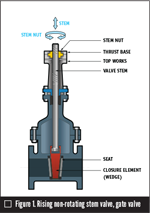
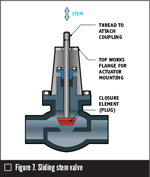


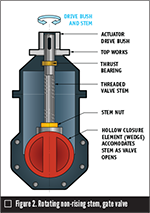


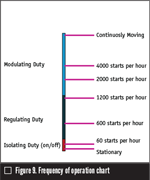
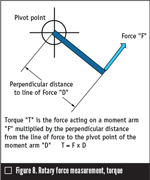



 Unloading large gate valve.jpg;maxWidth=214)


